 Technology peripherals
Technology peripherals
 AI
AI
 An article taking stock of the development trends and mainstream technologies of smart cars
An article taking stock of the development trends and mainstream technologies of smart cars
An article taking stock of the development trends and mainstream technologies of smart cars
With the continuous advancement of electrification, intelligence, networking and sharing of cars, more and more new technologies and new products have emerged. The reason why we can see in the field of smart cars The underlying reason for today’s scene of hundreds of flowers blooming is the continuous advancement of technology. Simply put, it is the empowerment of technology.
If we want to know why cars can drive autonomously, we need to first understand what is the connotation of fused sensing, vehicle-road collaboration, large computing power chips, high-precision maps and other technologies; if we want to know about electric To determine the upper limit of vehicle battery life, we must first look at the state of battery technology, such as 4680 batteries, cobalt-free batteries, solid-state batteries, CTP/CTC, blade batteries, 800V platforms, etc.; in addition, the electronic and electrical architecture of the vehicle Huge and complex technologies such as information security, thermal management systems, hybrid technology, and fuel cell technology are like the underlying foundations that determine the superstructure of future smart cars.
When we look forward to the new developments in the car industry in 2022, we might as well do an inventory and analysis around three key technologies, one is large computing power chips; the other is 800V High-voltage SiC platform; the third is a central computing architecture for multi-domain integration. These three pieces of content are the key technologies that will usher in strong development and large-scale launch in 2022. Let us talk about them one by one.
1 1000TOPS large computing power computing platform ushered in the first year of mass production and installation
We seem to often hear about computing power TOPS this year With this word, chip manufacturers are racking their brains to improve the computing power indicators of their products. Various car companies are also constantly flaunting that their cars can achieve performance with less computing power than the entire vehicle. It seems that horsepower is no longer used to describe a car with good performance. The only criterion for bad things is that computing power has moved to the center of the stage in this era of smart cars. So what exactly is computing power?
Computing power simply describes the computing power of a chip. TOPS is the unit of computing power. 1TOPS means that the processor can perform one trillion times per second (10 ^12) Operation, does it sound very exaggerated? In fact, we can compare it to the human brain. The human brain generally has 10 billion neurons. The more neurons, the smarter it is. So if the car wants to replace humans in thinking, it must have more powerful computing power to help us identify and Anticipate the unpredictable environment on the road and improve our driving safety. Therefore, the greater the computing power of the chip, the more scenarios and functions it can handle and respond to, and the stronger its ability to help us in emergency and complex scenarios.
The Salon Mecha Dragon released at the Guangzhou Auto Show at the end of last year has a computing power of 400TOPS;
NIO’s ET7/ET5 is equipped with 33 high-performance sensors, including 5 millimeter wave radars, 12 ultrasonic radars, and 1 ultra-long-range high-precision lidar. With the support of four NVIDIA Drive Orin chips, the total computing power is as high as 1016 TOPS;
This is not over yet, Great Wall WEY Mocha’s computing power will reach an astonishing 1440 TOPS with the blessing of the “Little Magic Box 3.0” developed by Feimo Zhixing and Qualcomm.
But it needs to be clarified that the computing power of thousands of TOPS does not refer to a single chip but a super large computing power platform integrated by multiple chips. We mentioned NIO’s super computing power above. The computing platform ADAM has reached 1016TOPS because there are four Orin chips with a single chip computing power of 254TOPS. Therefore, we have also made a statistical summary of the chip computing power in the current mainstream chip field to see what each chip has achieved. Such level:
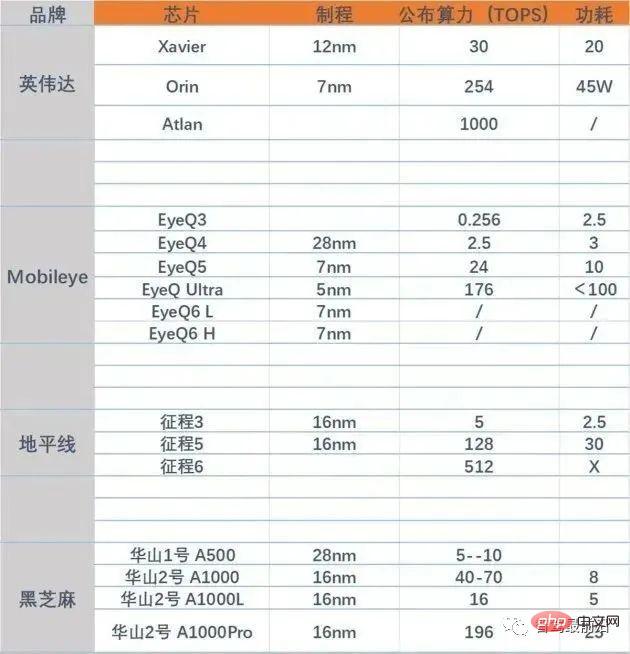
We can find from the statistical table that currently in the field of autonomous driving, Nvidia’s Orin chip has the largest computing power among mass-produced chips. Among domestic brands, Black Sesame’s Huashan No. 2 A1000Pro is the first to achieve a single-chip computing power of 196TOPS. Black Sesame Smart COM Yang Yuxin once said: “The premise of software-defined cars is that hardware comes first, and only the performance and computing power of the hardware are prepared. Sufficient, subsequent software can quickly realize iterative upgrades and extended function applications.”
Therefore, Black Sesame’s development strategy is to put hardware first and spread as much computing power as possible, just like many Like performance enthusiasts who pursue the number of cylinders and horsepower, the horsepower may not be available, but it must be available. But everything has two sides. Although the reserved computing power space is sufficient, the cost will inevitably rise. It depends on whether the car manufacturers and consumers are willing to pay for this part of the reserved computing power.
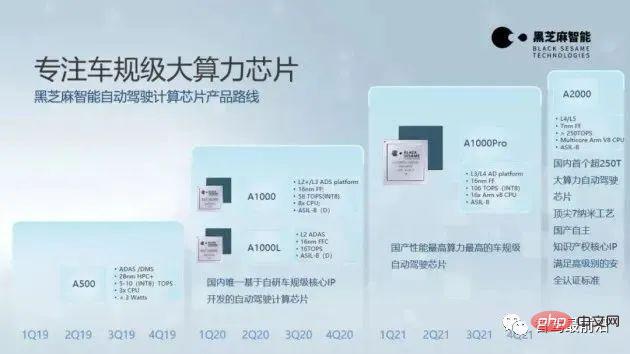
Of course, the domestic chip factory Horizon is also very good. The Journey 5 chip released last year reached 128TOPS, and Horizon CEO Yu Kai has stated many times that Horizon is not simply pursuing Physical computing power, but more emphasis on the computing efficiency of deep neural network algorithms on the chip, that is, FPS (Frames Per Second). It seems to be a more economical approach.
In addition, the strength of the three foreign giants Nvidia, Qualcomm, and Intel Mobileye in the field of autonomous driving chips cannot be underestimated. At the CES 2022 exhibition, these three companies also presented their products. Nvidia has announced that more companies will adopt its open DRIVE Hyperion platform. Volvo’s high-end brands Polestar, NIO, Xpeng, Li Auto, R Auto and Zhiji Auto have all adopted DRIVE Hyperion.
The platform includes high-performance computers and sensor architecture to meet the safety requirements for fully autonomous vehicles. The latest generation of DRIVE Hyperion 8 is built with redundant NVIDIA DRIVE Orin system-on-a-chip, 12 surround cameras, 9 radars, 12 ultrasound modules, 1 front-facing lidar and 3 internal perception cameras.
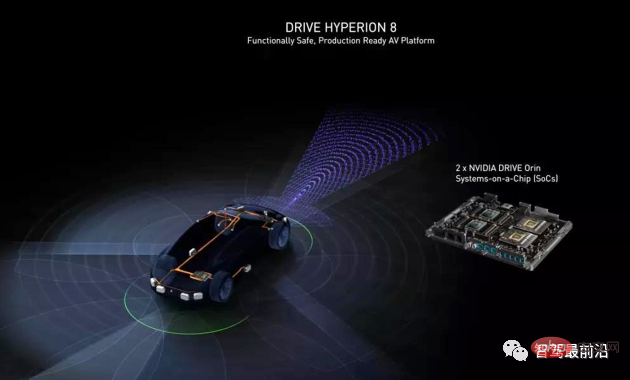
This system has strong security redundancy. Even if a computer or sensor fails, the backup device can ensure Self-driving cars take passengers safely to their destinations.
Qualcomm has launched the Snapdragon Ride platform in the field of autonomous driving, which can meet the needs of L2/L3 level autonomous driving. Qualcomm has also recently announced a number of cooperation developments, including assisting General Motors in building Cadillac LYRIQ and assisting BMW in building its autonomous driving platform. At the same time, Qualcomm announced at the show that it is expanding its technology portfolio to respond to the changing needs of the autonomous driving field.

Intel’s Mobileye has released three chips in a row, namely EyeQ Ultra, EyeQ 6L and EyeQ 6H. It can be regarded as sounding the clarion call for counterattack.
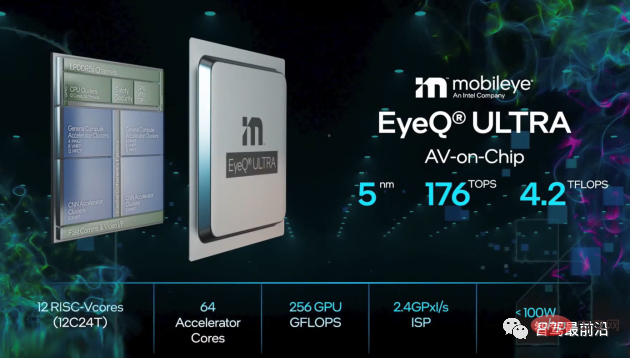
In the future, the computing power of chips will be the cornerstone of the development of smart cars. Only by continuous breakthroughs in computing power can the upper limit of smart cars’ intelligence be raised. higher.
2 The 800V high-voltage SiC platform will become a magic weapon for car companies
The chip computing power we mentioned earlier determines the intelligence of a car level, then the technology we are going to talk about next is the ability to determine the charging speed of an electric vehicle.
You must know that slow charging has become a major pain point for many electric vehicle users and is also the culprit that discourages many users from trying electric vehicles. Although there are currently battery swapping technologies that can greatly Improve energy replenishment efficiency, but its development is restricted due to high cost and difficulty in promotion. Therefore, fast charging is currently the solution with the greatest development potential and the most likely to become mainstream.
First of all, we need to know that the charging speed is determined by the charging power. Then let’s recall the physics knowledge in high school. Power = voltage × current, that is, P = U*I, so we want There are only two ways to increase charging power, either increasing voltage or increasing current.
Therefore, two technical routes have been developed, one is the high-current school represented by Tesla and Ji Krypton, and the other is the high-voltage school represented by Porsche and supported by many other manufacturers. Let’s briefly talk about the high current school. The biggest difficulty of this school is the heating problem caused by the increase in current. We also introduce the heating formula: Q=I^2Rt. It can be seen that the heat will increase exponentially as the current increases. , so how to dissipate heat has become a development problem. Taking Tesla as an example, when charging at a V3 supercharger with a power of 250Kw, the maximum current can be as high as 600A. The heat generation can be imagined, but Tesla uses a water-cooled charging gun and A variety of thermal management solutions allow this problem to be solved. Moreover, the reason why Tesla chooses high current as its development direction is due to cost control issues, because the components of the high-voltage platform will increase the cost of the entire vehicle. It can be seen from Tesla's current downward prices that high voltage is obviously in the opposite direction. .
Then let’s get back to the topic of high-voltage platforms. The traditional voltage platform is generally 400V. The high-voltage platform currently raises the voltage to 800V or even higher. High voltage can effectively solve the heating problem of large currents. Low current and high voltage need to be equipped with high-voltage charging piles and high-voltage adaptation solutions at the vehicle end.
Charging terminal: Charging guns, contactors, wire harnesses, fuses and other components must be replaced and upgraded to high-voltage resistant materials.
Vehicle side: The vehicle's own power battery, air conditioning compressor, electric drive, PTC, OBC, DC/DC and other components for high-voltage platforms must be newly designed and adjusted. , to adapt to the new high-voltage platform.
The upgrade of the charging end is easy to say, but the upgrade of components on the vehicle end requires new technical support. It was mentioned before that the problem with high current is heating, so the limiting factor for high voltage is the current automotive-grade component IGBT (Insulated Gate Bipolar Transistor), that is, an insulated gate bipolar transistor.
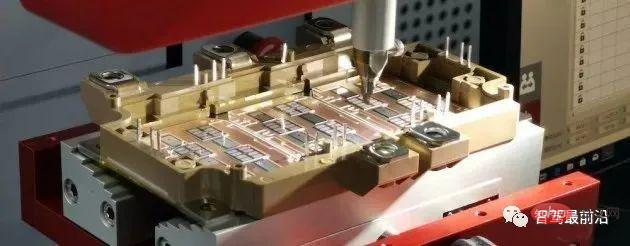
It has insufficient high-pressure resistance, so it is necessary to choose new high-pressure-resistant materials to replace existing components. This new material is SiC carbonization silicon.
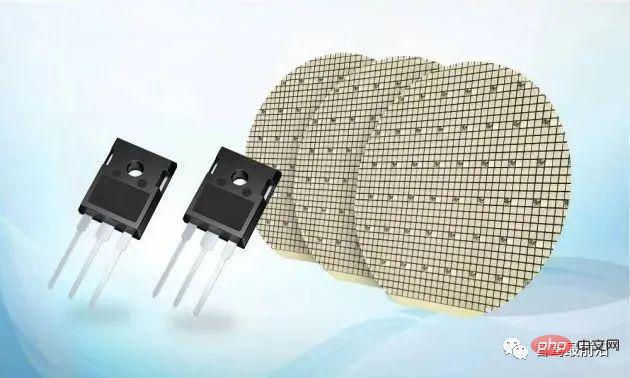
SiC devices have an operating temperature above 200°C, an operating frequency above 100kHz, and a withstand voltage of up to 20kV. These properties are better than those of traditional silicon-based devices. IGBT; The volume of SiC devices is one-third to one-fifth of the entire IGBT machine, and the weight is 40%-60% of the IGBT; it can also improve the efficiency of the system. Under different operating conditions of electric vehicles, SiC devices are smaller than IGBTs. The power consumption is reduced by 60%-80%, and the efficiency can be increased by 1%-3%.
But it should also be noted that IGBT accounts for about 7%-10% of the cost of electric vehicles, making it the second most expensive electric vehicle accessory after power batteries. If SiC is used, the current cost of SiC MOSFET of the same level is about 8-12 times that of IGBT, and the loss is also greater than IGBT. Therefore, if a high-voltage platform is used, how to control costs will also become a major problem for car companies.
In addition to the Porsche Taycan we mentioned earlier that already uses an 800V high-voltage platform, many domestic brands are also accelerating their layout. For example, the newly released Xpeng G9 will be equipped with an 800V SiC platform and will be equipped with a 480Kw high-voltage supercharging pile.

Great Wall Salon Mecha Dragon also supports high-voltage platforms, including BYD, Dongfeng Lantu, Geely Automobile, GAC Aian, Li Auto, and BAIC Many brands such as Jihu will join the camp of high-voltage platforms.
Therefore, both high current and high voltage are to improve the efficiency of our energy replenishment, but at present, the 800V SiC high-voltage platform is expected to become mainstream, and many car companies will also adopt it. With this platform in mind, this year will also be the first year for the development of the 800V SiC high-voltage platform. Although there are still many difficulties to be solved, we can see that the market prospects are very good.
3 Automotive electronic and electrical architecture develops from distributed architecture to multi-domain integration
To talk about this topic, first we need to understand what is electronic and electrical architecture, also called E/E Architecture, this architecture refers to the overall layout plan of the vehicle's electronic and electrical system, which integrates various sensors, processors, wiring harness connections, electronic and electrical distribution systems, and software and hardware in the vehicle to realize the functions, computing, and power of the vehicle. and energy distribution.
Generally speaking, the realization of functions such as four-wheel drive, airbags, anti-lock braking systems, lifting windows, and radio in-car entertainment systems of our vehicles all need to be implemented on this architecture. Complete, and what controls each function is a component called ECU. ECU refers to the electronic control unit, also known as "driving computer". The function of ECU is relatively simple. It is basically an ECU that implements one main function. So you can imagine that there are So many functions require dozens of ECUs to control. Therefore, in the early E/E architecture, it was in a distributed form. Each ECU was connected together through CAN and LIN buses. Now due to the popularity of autonomous driving and smart cockpits, If distributed ECUs are used to control the car, then there will be big problems with the number of chips, vehicle costs and safety. Therefore, one or several "brains" are used to control the ECU and sensor architecture of the entire vehicle, DCU. (Domain Control Unit), that is, the automotive domain controller came into being.
Currently domain controllers are typically divided into five main domains: powertrain, chassis control, body control, autonomous driving, and smart cockpit. Each domain has a main high-performance ECU, which is responsible for processing and forwarding functions within the domain. A low-speed bus is generally used within a domain, and a high-speed bus or the commonly used automotive Ethernet interconnection is used between domains.
Among these domain controls, the one that attracts more attention is the automatic driving domain control. In the past, an ADAS system required several independent ECUs to be implemented. For example, lane departure and traffic recognition ECU, forward collision warning ECU, parking assist ECU, and blind spot detection ECU. Some also have panoramic view ECUs, rear collision warning ECUs, etc. Now that there is a domain controller for autonomous driving, one domain can realize all functions, which greatly improves the integration of the chassis and the centralized control of functions.
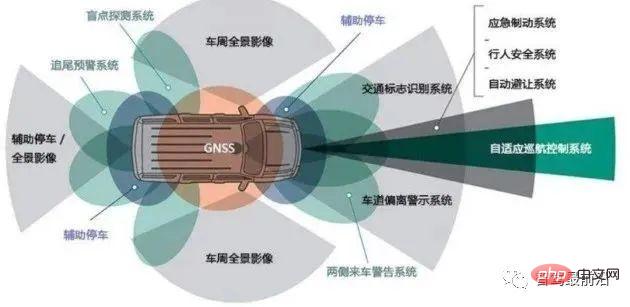
The future development of E/E architecture will develop in the direction of distributed domain centralized central computing:
Distributed architecture: Under this architecture, there is a corresponding relationship between the ECU and the implemented functions.
Domain centralized architecture: This architecture further integrates ECU and introduces DCU (domain controller unit, domain controller).
Central computing architecture: This architecture further integrates DCUs, and all DCUs are integrated into a central computer. There is no correspondence between functions and components; a central computer directs the actuators as needed.

In the process of moving from domain centralization to central computing, there is another excessive form that is currently being attempted by many car companies. . Currently, there are two mainstream cross-domain integration solutions: 1. Fusion by function 2. Fusion by location.
Integration by function: three-domain architecture. The three-domain architecture divides the entire vehicle into three functional domains: vehicle control (vehicle domain controller, VDC), intelligent driving (ADAS domain controller, ADC), and smart cockpit (cockpit domain controller, CDC) to realize vehicle driving and autonomous driving respectively. , infotainment and other functions. For example, the E3 architecture of Volkswagen's MEB platform, BMW's iNEXT model architecture, and Huawei's CC architecture all fall into this category.
Fusion by location: According to the physical space of the car, the entire car is divided into multiple areas, such as the left body area, the right body area, etc. The number of wire harnesses can be significantly reduced, freeing up more physical space. Tesla, Toyota, etc. all fall into this category.
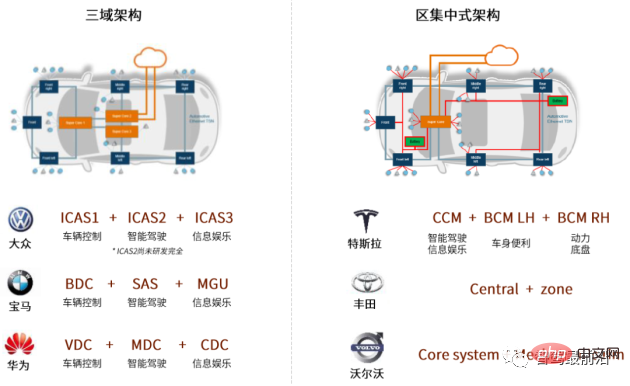
In short, the future development direction must be towards the direction of reducing entropy. Distribution means complexity and high degree of chaos. Level-by-level integration and finally moving towards unified management will reduce the entropy value, which means cost reduction and efficiency improvement. It means that more functions can be expanded.
The above is the detailed content of An article taking stock of the development trends and mainstream technologies of smart cars. For more information, please follow other related articles on the PHP Chinese website!

Hot AI Tools

Undresser.AI Undress
AI-powered app for creating realistic nude photos

AI Clothes Remover
Online AI tool for removing clothes from photos.

Undress AI Tool
Undress images for free

Clothoff.io
AI clothes remover

AI Hentai Generator
Generate AI Hentai for free.

Hot Article

Hot Tools

Notepad++7.3.1
Easy-to-use and free code editor

SublimeText3 Chinese version
Chinese version, very easy to use

Zend Studio 13.0.1
Powerful PHP integrated development environment

Dreamweaver CS6
Visual web development tools

SublimeText3 Mac version
God-level code editing software (SublimeText3)

Hot Topics
 1385
1385
 52
52
 The Stable Diffusion 3 paper is finally released, and the architectural details are revealed. Will it help to reproduce Sora?
Mar 06, 2024 pm 05:34 PM
The Stable Diffusion 3 paper is finally released, and the architectural details are revealed. Will it help to reproduce Sora?
Mar 06, 2024 pm 05:34 PM
StableDiffusion3’s paper is finally here! This model was released two weeks ago and uses the same DiT (DiffusionTransformer) architecture as Sora. It caused quite a stir once it was released. Compared with the previous version, the quality of the images generated by StableDiffusion3 has been significantly improved. It now supports multi-theme prompts, and the text writing effect has also been improved, and garbled characters no longer appear. StabilityAI pointed out that StableDiffusion3 is a series of models with parameter sizes ranging from 800M to 8B. This parameter range means that the model can be run directly on many portable devices, significantly reducing the use of AI
 This article is enough for you to read about autonomous driving and trajectory prediction!
Feb 28, 2024 pm 07:20 PM
This article is enough for you to read about autonomous driving and trajectory prediction!
Feb 28, 2024 pm 07:20 PM
Trajectory prediction plays an important role in autonomous driving. Autonomous driving trajectory prediction refers to predicting the future driving trajectory of the vehicle by analyzing various data during the vehicle's driving process. As the core module of autonomous driving, the quality of trajectory prediction is crucial to downstream planning control. The trajectory prediction task has a rich technology stack and requires familiarity with autonomous driving dynamic/static perception, high-precision maps, lane lines, neural network architecture (CNN&GNN&Transformer) skills, etc. It is very difficult to get started! Many fans hope to get started with trajectory prediction as soon as possible and avoid pitfalls. Today I will take stock of some common problems and introductory learning methods for trajectory prediction! Introductory related knowledge 1. Are the preview papers in order? A: Look at the survey first, p
 First in China: Changxin Memory launches LPDDR5 DRAM memory chip
Nov 28, 2023 pm 09:29 PM
First in China: Changxin Memory launches LPDDR5 DRAM memory chip
Nov 28, 2023 pm 09:29 PM
News from this site on November 28. According to the official website of Changxin Memory, Changxin Memory has launched the latest LPDDR5DRAM memory chip. It is the first domestic brand to launch independently developed and produced LPDDR5 products, achieving a breakthrough in the domestic market and also making Changxin Storage's product layout in the mobile terminal market is more diversified. This website noticed that Changxin Memory LPDDR5 series products include 12Gb LPDDR5 particles, POP packaged 12GBLPDDR5 chips and DSC packaged 6GBLPDDR5 chips. The 12GBLPDDR5 chip has been verified on models of mainstream domestic mobile phone manufacturers such as Xiaomi and Transsion. LPDDR5 is a product launched by Changxin Storage for the mid-to-high-end mobile device market.
 DualBEV: significantly surpassing BEVFormer and BEVDet4D, open the book!
Mar 21, 2024 pm 05:21 PM
DualBEV: significantly surpassing BEVFormer and BEVDet4D, open the book!
Mar 21, 2024 pm 05:21 PM
This paper explores the problem of accurately detecting objects from different viewing angles (such as perspective and bird's-eye view) in autonomous driving, especially how to effectively transform features from perspective (PV) to bird's-eye view (BEV) space. Transformation is implemented via the Visual Transformation (VT) module. Existing methods are broadly divided into two strategies: 2D to 3D and 3D to 2D conversion. 2D-to-3D methods improve dense 2D features by predicting depth probabilities, but the inherent uncertainty of depth predictions, especially in distant regions, may introduce inaccuracies. While 3D to 2D methods usually use 3D queries to sample 2D features and learn the attention weights of the correspondence between 3D and 2D features through a Transformer, which increases the computational and deployment time.
 It is reported that TSMC's advanced packaging customers are chasing orders significantly, and monthly production capacity is planned to increase by 120% next year
Nov 13, 2023 pm 12:29 PM
It is reported that TSMC's advanced packaging customers are chasing orders significantly, and monthly production capacity is planned to increase by 120% next year
Nov 13, 2023 pm 12:29 PM
News from this site on November 13, according to Taiwan Economic Daily, TSMC’s CoWoS advanced packaging demand is about to explode. In addition to NVIDIA, which has confirmed expanded orders in October, heavyweight customers such as Apple, AMD, Broadcom, and Marvell have also recently pursued orders significantly. According to reports, TSMC is working hard to accelerate the expansion of CoWoS advanced packaging production capacity to meet the needs of the above-mentioned five major customers. Next year's monthly production capacity is expected to increase by about 20% from the original target to 35,000 pieces. Analysts said that TSMC's five major customers have placed large orders, which shows that artificial intelligence applications have become widely popular, and major manufacturers are interested in artificial intelligence chips. The demand has increased significantly. Inquiries on this site found that the current CoWoS advanced packaging technology is mainly divided into three types - CoWos-S
 'Minecraft' turns into an AI town, and NPC residents role-play like real people
Jan 02, 2024 pm 06:25 PM
'Minecraft' turns into an AI town, and NPC residents role-play like real people
Jan 02, 2024 pm 06:25 PM
Please note that this square man is frowning, thinking about the identities of the "uninvited guests" in front of him. It turned out that she was in a dangerous situation, and once she realized this, she quickly began a mental search to find a strategy to solve the problem. Ultimately, she decided to flee the scene and then seek help as quickly as possible and take immediate action. At the same time, the person on the opposite side was thinking the same thing as her... There was such a scene in "Minecraft" where all the characters were controlled by artificial intelligence. Each of them has a unique identity setting. For example, the girl mentioned before is a 17-year-old but smart and brave courier. They have the ability to remember and think, and live like humans in this small town set in Minecraft. What drives them is a brand new,
 Sources say NVIDIA is developing China-specific versions of AI chips HGX H20, L20 PCle and L2 PCle
Nov 09, 2023 pm 03:33 PM
Sources say NVIDIA is developing China-specific versions of AI chips HGX H20, L20 PCle and L2 PCle
Nov 09, 2023 pm 03:33 PM
The latest news shows that according to reports from the Science and Technology Innovation Board Daily and Blue Whale Finance, industry chain sources revealed that NVIDIA has developed the latest version of AI chips suitable for the Chinese market, including HGXH20, L20PCle and L2PCle. As of now, NVIDIA has not commented. People familiar with the matter said that these three chips are all based on improvements from NVIDIA H100. NVIDIA is expected to announce them as soon as November 16, and domestic manufacturers will get samples as soon as these days. After checking public information, we learned that NVIDIAH100TensorCoreGPU adopts the new Hopper architecture, which is based on TSMC N4 process and integrates 80 billion transistors. Compared with the previous generation product, it can provide multi-expert (MoE)
 Review! Deep model fusion (LLM/basic model/federated learning/fine-tuning, etc.)
Apr 18, 2024 pm 09:43 PM
Review! Deep model fusion (LLM/basic model/federated learning/fine-tuning, etc.)
Apr 18, 2024 pm 09:43 PM
In September 23, the paper "DeepModelFusion:ASurvey" was published by the National University of Defense Technology, JD.com and Beijing Institute of Technology. Deep model fusion/merging is an emerging technology that combines the parameters or predictions of multiple deep learning models into a single model. It combines the capabilities of different models to compensate for the biases and errors of individual models for better performance. Deep model fusion on large-scale deep learning models (such as LLM and basic models) faces some challenges, including high computational cost, high-dimensional parameter space, interference between different heterogeneous models, etc. This article divides existing deep model fusion methods into four categories: (1) "Pattern connection", which connects solutions in the weight space through a loss-reducing path to obtain a better initial model fusion



